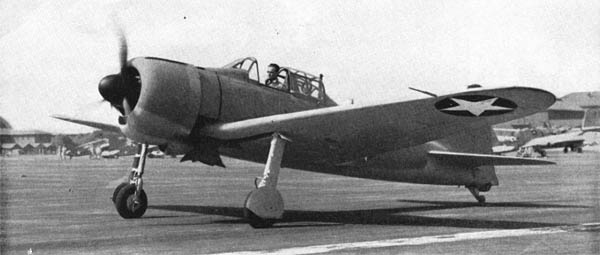Intelligence report on a Japanese Zero fighter forced down over the Aleutian Islands and captured by American forces. Source: Bureau of Naval Personnel Information Bulletin, (“All Hands Magazine”), November 1942.
The Japanese “Zero” Fighter
Plane proves maneuverable but protection is poorA Japanese Zero fighter (Mitsubishi ’00), which was salvaged after being only slightly damaged when forced down in the Aleutian Islands, has been brought to the United States and repaired at the Naval Air Station, San Diego, Calif.
The enemy plane will be brought to the Naval Air Station at Anacostia, D.C., where Navy pilots will put it through exhaustive tests in order to obtain data on its performance characteristics. Preliminary tests already have taken place at San Diego.
Present plans call for the Zero to be flown across the United States, in view of the difficulties attached to shipping it. Because the Zero’s airframe is a single unit and the wings are riveted solidly to the fuselage, it is not considered feasible to attempt disassembly of the plane. Details of the proposed cross-country flight have not been worked out.
When salvaged, the Zero was painted a smooth light grey tinted with blue and light green, a coloring selected for operations in the foggy Aleutian area. It has been repainted in Navy colors.
Preliminary flight tests of the Zero developed a top speed of slightly less than 300 m.p.h. Later tests may increase this speed somewhat.
The Zero shows to best advantage in a dogfight where tight turns make high speeds impossible. Then its maneuverability and climbing speed come into play.
Around 200 m.p.h. the Zero is very light on the controls, but at higher speeds the controls become stiff. Above 225 m.p.h. the Zero will not make a fast roll because of this stiffness. At 380 m.p.h., in a dive, the Zero develops marked flutter and vibration, which may be inherent or due to some undetected disalignment caused by its rough landing in the Aleutians.
Otherwise the Zero is a stable, easy-to-fly plane with generally good flying characteristics. Its lightness is not gained by flimsy construction, as it is well designed. The lack of self-sealing tanks and armor protection for the pilot, which mainly accounts for its lightness, have made its over-all combat record against the Navy’s Grumman Wildcat a poor one. The Zero’s empty weight is 3,781 pounds and its combat weight, without belly tank, is approximately 5,200 pounds.
The 900-horsepower radial engine is a 14-cylinder, double-row design using modifications or direct adoption of many features found in our Pratt & Whitney and Wright engines. The propeller is a three-bladed, constant speed, hydraulic type identical with the Hamilton model. Radio equipment is copied after Fairchild units.
The over-all length of the Zero is 30’3″, its wing span 39’5″. The wings are hinged 2 feet from the tips to allow folding for easier carrier handling. The cockpit would be uncomfortably small for most of our pilots.
Armament consists of two 22-mm. low velocity cannon, one mounted in each wing, with 60 rounds of ammunition, and two 7.7 guns, with 500 rounds each, in the nose to fire through the propeller disk.



















